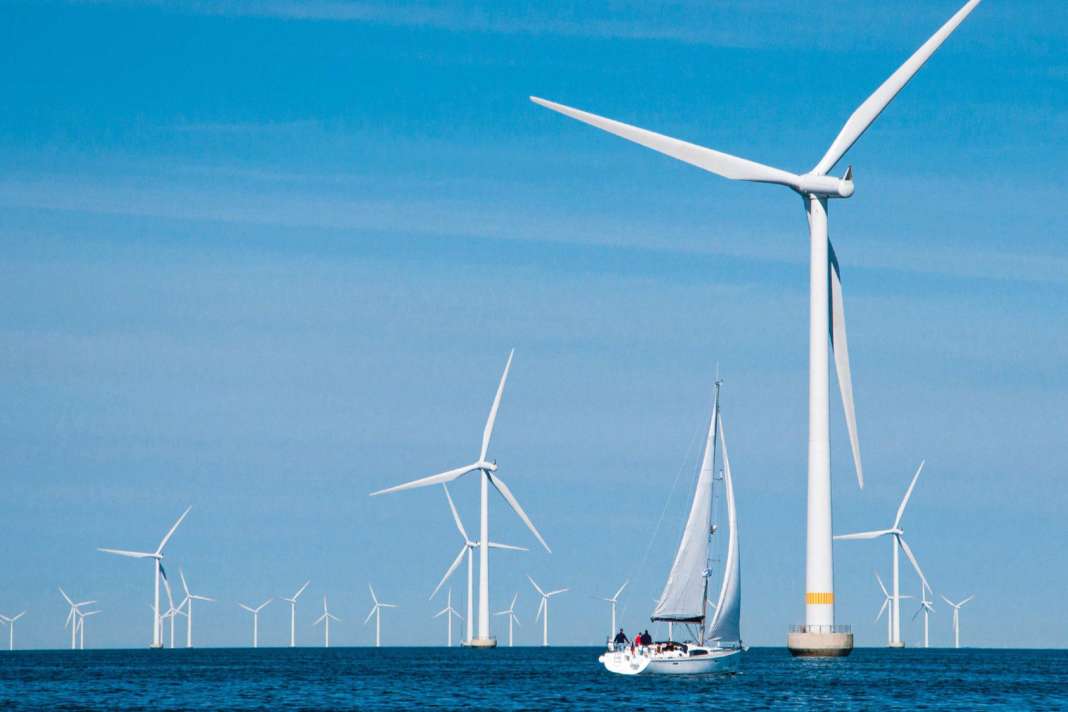North Sea and Baltic Sea: Skippers, watch out - these navigation rules apply to offshore wind farms





On the coasts of England and the Netherlands, you can get an impression of what is coming to Germany in terms of offshore wind farms. On the west coast of the island in particular, the wind turbines are lined up like a dense forest. Detours are almost unavoidable.
After all, driving through wind farms is generally permitted in the UK. Only a radius of 50 metres around the individual wind turbines must be avoided. Very rarely are there fixed corridors from which you are not allowed to deviate.
The situation is different in Germany and its neighbouring countries. Each state has different procedures and even within Germany there are no standardised driving rules. The chaos should have been resolved years ago, but no harmonised solution has yet been implemented. We have therefore summarised the most important information on the different navigation rules here.
How dangerous are offshore wind farms for recreational boaters?
But even if it is permitted to sail through the centre of the wind turbines, skippers still have to ask themselves how dangerous this can be under certain circumstances. To date, there has been no known case of a boat colliding with such a turbine. However, with the foreseeable huge increase in the number of wind turbines, the associated risk of accidents is also increasing.
"In strong winds, in poor visibility or darkness, with a course high on the wind or with heavy traffic, skippers should avoid the parks," advises Stuart Carruthers. The Brit is a member of the national sailing association and has spent years dealing with the operators of the wind farms to prevent restrictions for sailors in his country. And he succeeded. In the English sailing magazine "Yachting Monthly", Carruthers says: "Sailing through a wind farm off the British coast is absolutely fine." Provided that the charts are up to date, the boat is not too big, i.e. the mast is not too high, and there is a radio on board to listen to the wind farm's working channel.
Separate regulations for wind farms under construction
"However, special care should be taken with workboats, which often travel back and forth between the wind turbines. They do not have an automatic right of way and there are no restricted zones around them. But they are often travelling very fast and can only be seen late, especially in hazy weather conditions," says the expert. They are also sometimes obscured by the structures and therefore cannot always be recognised as quickly as a ship on the open sea.
There is no need to worry about poor visibility in a wind farm in Germany. If visibility falls below a certain level due to weather conditions, an exclusion zone regulation automatically comes into force for most wind farms. The following then applies: recreational boaters must stay outside!
This is the case per se during the construction phase of a wind farm - not only in Germany, but also in other countries. Even in the UK. However, it is sometimes difficult to recognise whether a new wind farm has already been completed and is already in operation or not. However, the relevant information about the exclusion zones associated with construction is disseminated by the national maritime authorities, in this country in the "Nachrichten für Seefahrer".
The most important navigation rules for wind farms in the Baltic Sea
Germany
Wind farms are restricted areas: Passage prohibited; minimum distance of 500 metres. Exceptions are the EnBW Baltic 1 + 2, Wikinger and Arkona-Becken Südost wind farms (see map below). The following applies to them:
- During the day, AIS-equipped vessels up to 24 metres in length may pass directly through them.
- Anchoring between or mooring at the facilities is prohibited.
- Visibility must be at least 1,000 metres.
- The wind must not exceed 6 Beaufort.
- A distance of 150 metres must be maintained from individual wind turbines and 1,000 metres from platforms with transformer stations or other technical facilities.
- If work or air traffic is taking place in the park, a minimum distance of 1,000 metres also applies.
- The official nautical chart no. 2660 must be on board.
Denmark
Wind farms may generally be travelled through. Only in older wind farms, where the distances between the wind turbines are closer than in newer wind farms, is anchoring explicitly prohibited. In newer farms, anchoring is only prohibited in specially designated exclusion zones to protect submarine cables.
As a general rule: Before setting off on a trip, obtain the latest information from the maritime authorities in the respective countries. In Germany, this is the BSH's "Nachrichten für Seefahrer". Listen to the local radio while underway. And: The navigation rules only apply to installations that are already in operation. Where new parks are being built, there are always exclusion zones that must be avoided.
The most important navigation rules for wind farms in the North Sea
Germany
Wind farms are also restricted areas here. Exceptions are Nordsee Ost, Dan Tysk (from 1 May to 30 September each year), Meerwind Südost and Butendiek. The official nautical chart no. 1370 must be on board. Otherwise, the same rules apply as in the Baltic Sea.
Denmark
The same applies Rules like on the Baltic Sea.
The Netherlands
The Luchterduinen, Egmond aan Zee and Prinses Amalia wind farms can be navigated by boats up to 24 metres in length. In new parks, corridors have been or will be set up for boats up to 46 metres in length. Special rules also apply to some parks.
Great Britain
Wind farms may be travelled through. Only some wind farms have corridors for shipping. In addition to the wind farms, there are also extensive areas off the British North Sea coast (outlined in blue on the map) with countless oil and gas production platforms.

